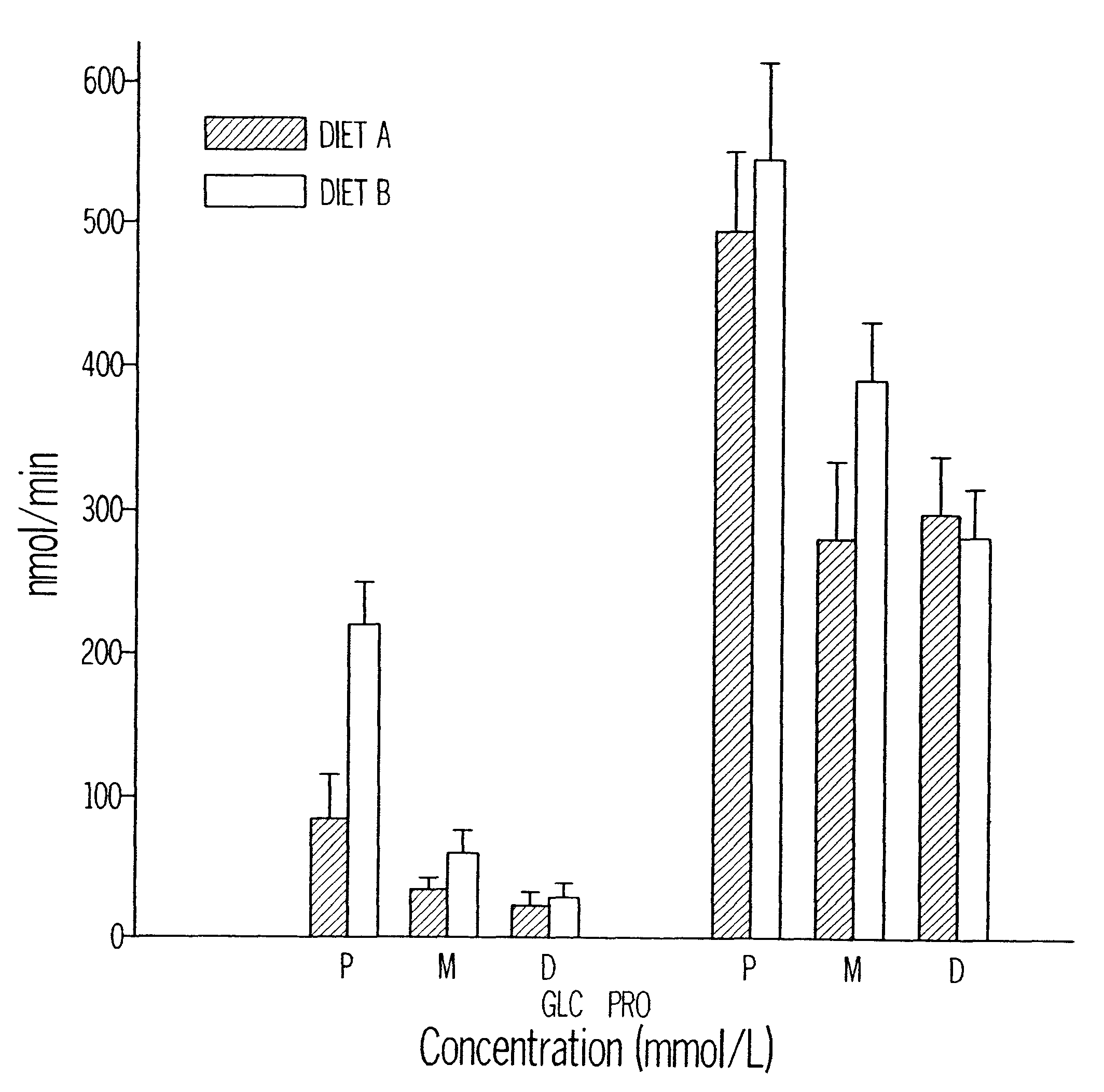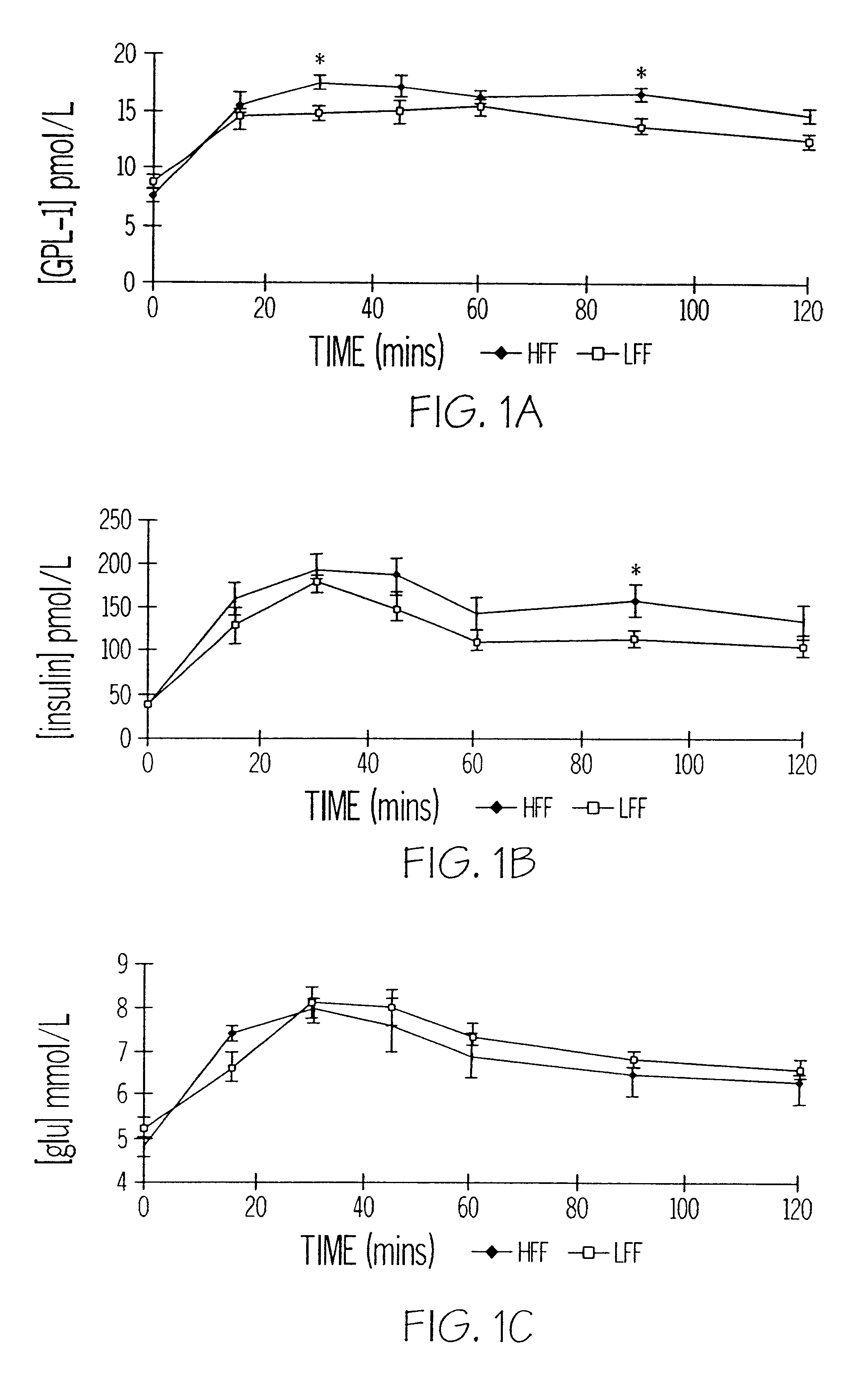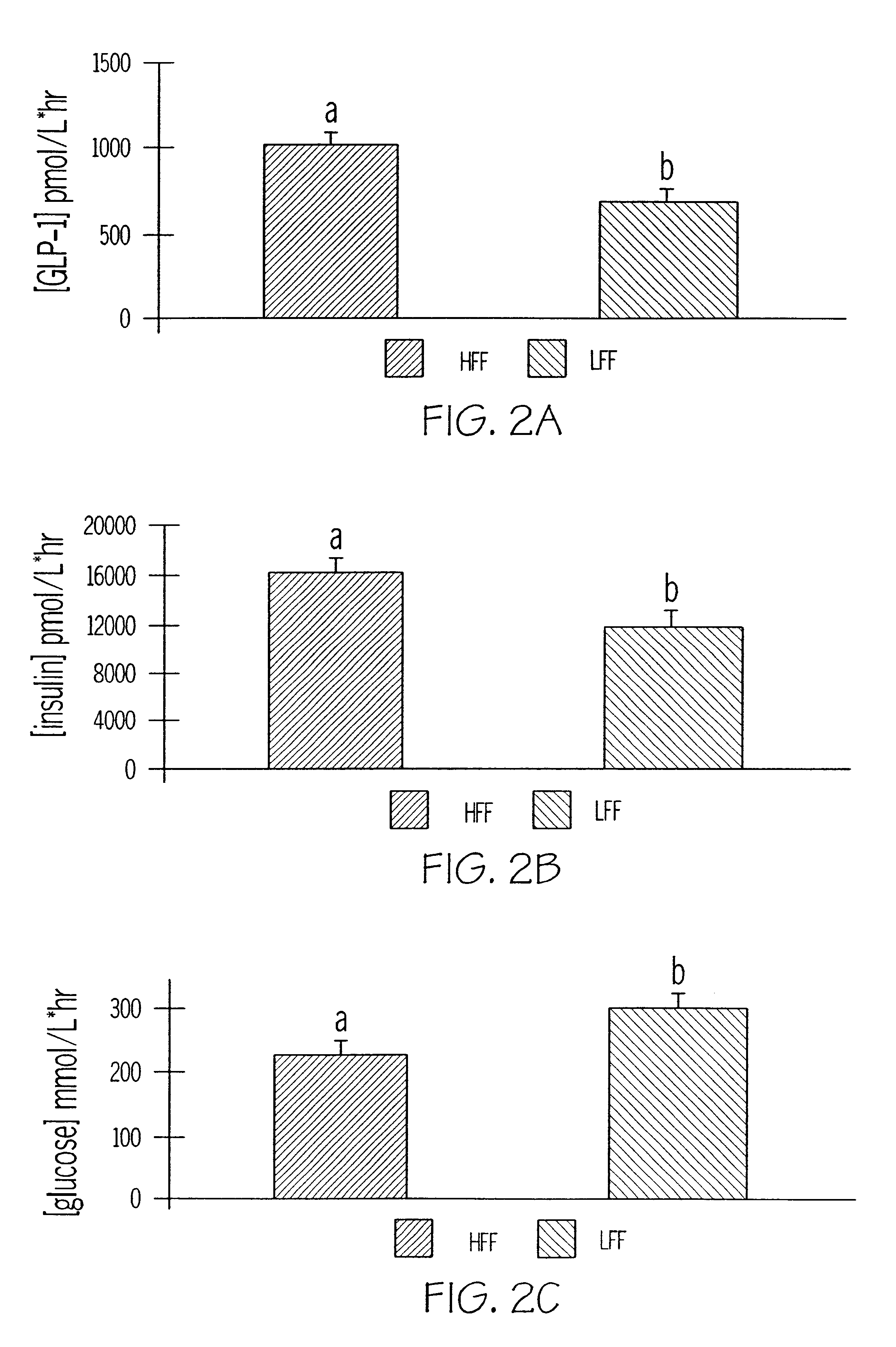Process for improving glucose metabolism, satiety, and nutrient absorption in companion animals
a technology for nutrient absorption and glucose metabolism, which is applied in the field of process for improving glucose metabolism, satiety, and nutrient absorption in companion animals, which can solve the problems of increasing the risk of the animal developing diabetes or other chronic diseases, affecting the health and well-being of the animal, and other animals may have difficulty in digesting and absorbing nutrients from their diets, so as to improve the glucose homeostasis, improve the effect of glucose metabolism and morphology
- Summary
- Abstract
- Description
- Claims
- Application Information
AI Technical Summary
Benefits of technology
Problems solved by technology
Method used
Image
Examples
example 1
Diets, see Table 1, were formulated to be isonitrogenous and isoenergetic and to provide approximately 19.5 MJ / kg diet with 35% of the energy from carbohydrate, 30% from fat and 35% from protein. The low fermentable fiber (LFF) diet contained wood cellulose as the fiber source and the high fermentable fiber diet (HFF) diet contained a blend of more fermentable plant fibers (beet pulp, Michigan Sugar, Saginaw, Mich.; gum arabic, TIC Gums, Belcamp, Md.; fructooligosaccharides (FOS), Golden Technologies Corporation, Golden, Colo.). The ratio of beet pulp to gum arabic to FOS was about 6:2:1.5. The ratio of beet pulp to FOS was about 4:1.
Adult mongrel dogs (n=16) were utilized. Upon arrival, animals were acclimatized for 7 days and fed a nutritionally complete diet (Can-Pro, Beaumont, Ala.). All dogs were weighed daily and individually fed to meet energy requirements using the formula: Energy intake (MJ)=0.553.times.kg (body weight).sup.0.67. Food was offered once daily between 0900-100...
example 2
Two groups of five adult beagles each with both sexes, were fed two diets that differed only in the source of fiber (see Table 3). Cellulose, which is minimally degraded during passage through the canine gastrointestinal tract (GIT), was added to the control diet (A) at a level of 3.6%. The second diet (B) contained beet pulp (4.2%) and fructooligosaccharides (FOS) (1%), which are fermented by the GIT bacteria of dogs. Chemical analyses showed both diets had 25.9% protein, 11.8% fat, with 6.2% moisture, 5.7% ash, 1.23% calcium, and 0.79% phosphorus. Diet B used a blend of beet pulp and FOS because differences in their rates of fiber fermentation by the intestinal bacteria of dogs. The products of bacterial metabolism of FOS, such as SCFA, should be available more proximally in the GIT compared to those from beet pulp, which is fermented slower. Furthermore, the two sources of fermentable fiber are designed to yield different concentrations and proportions of SCFA. The cellulose (Sol...
PUM
| Property | Measurement | Unit |
|---|---|---|
| weight percent | aaaaa | aaaaa |
| weight percent | aaaaa | aaaaa |
| weight percent | aaaaa | aaaaa |
Abstract
Description
Claims
Application Information
 Login to view more
Login to view more - R&D Engineer
- R&D Manager
- IP Professional
- Industry Leading Data Capabilities
- Powerful AI technology
- Patent DNA Extraction
Browse by: Latest US Patents, China's latest patents, Technical Efficacy Thesaurus, Application Domain, Technology Topic.
© 2024 PatSnap. All rights reserved.Legal|Privacy policy|Modern Slavery Act Transparency Statement|Sitemap



